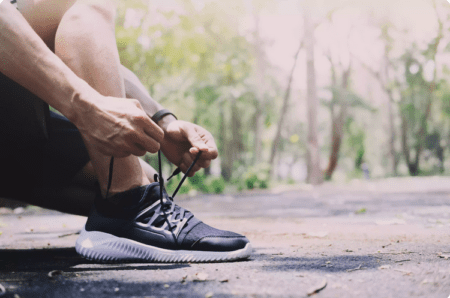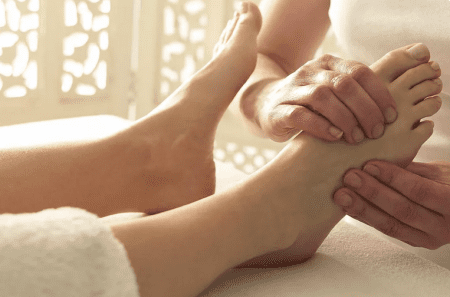High-heeled shoes are more popular than ever, and many women often ask, “Can wearing heels really be bad for my body?” Regular wearers of high heels who experience foot, back, or knee problems also wonder if there is any way they can comfortably wear the stylish shoes they love. Podiatrists and orthopedic specialists often see firsthand some of the problems that develop from wearing high-heeled shoes.
Studies have shown that high heeled shoes create excess pressure on the plantar surface, or sole of the foot, which can lead to metatarsalgia (ball of the foot pain), excess stress on foot joints, and painful calluses. The higher the heel is, the more probability that muscular imbalances are occurring while walking in the shoes — causing certain leg and foot muscles to work too hard. These imbalances can lead to problems such as knee pain, heel pain (plantar fasciitis), and hammer toes.
Sometimes an occasion calls for a great-looking pair of heels, but no one wants to sacrifice their health and well-being for fashion. The following celebrity photos identify common mistakes women make in choosing heels, helping to guide you toward choosing better shoes for your comfort and health.
Mistake 1: The Shoe Doesn’t Fit
Notice the gap between the shoe and the wearer’s heel and arch areas — it likely indicates a shoe that is too long and too wide. This can cause the foot to shift around in the shoe while walking and will surely lead to pain and discomfort. In this case, she probably chose a style that was too wide for her foot.
You may be surprised to learn that your shoe size has changed over the years. A change in foot size can often be attributed to hormonal changes and natural changes in soft tissue that occur with aging.
Better Choice: The next time you shop for shoes, be sure to measure your feet for both length and width. Be aware that the right size shoe may not always be a good fit, so it helps to try on a few different styles until you find the most comfortable fit.
Mistake 2: Extreme Height
One of the most common problems with high heels is pain under the ball of the foot. A higher heel means more stress on the ball of the foot, ankle, and knee, which increases as the height goes up.
Better Choice: Even though these heels have an extreme heel height and appear to be too small in size (notice the dangling toes), they do have three preferable features:
- The thickness underneath the ball of the foot offsets some of the heel height, and depending on the shoe’s material, may offer better cushioning than a thinner-soled shoe.
- The chunkiness of the shoe’s heel is preferable to a stiletto heel because it is more stable.
- The heel is positioned more toward the back of the shoe, which is more stable than a heel positioned more toward the center of the shoe.
Mistake 3: Not Enough Coverage
The only things holding this shoe onto her foot are a tiny ankle strap and a small amount of material across the toes. As she’s bearing weight on the right foot, the shoe is gapping across the middle of her foot and heel, showing that there is inadequate support. This will allow too much motion on an already unsteady, elevated heel. You can bet that long periods of walking in these shoes will leave you with tired, sore feet and put you at risk for an ankle sprain.
Better Choice: Your best bet is to choose styles that fit the shape of your foot well, offering adequate material to hold your foot in the shoe — a good example is a high-heeled boot or a shoe with straps across the toe area, arch, and ankle.
Mistake 4: Toe Torture
Seeing the way the toes are squeezed into these pointy-toed shoes is painful to observe. Besides the toes being pushed into a cramped space, there is an issue with the shoe’s toe material not covering enough of the toes. This forces the toes to work harder at maintaining stability, possibly contributing to toe contractures, such as hammer toes.
Better Choice: A better choice is a shoe that has more material across the toes and more of a rounded toe box. Another toe problem that can be aggravated by high-heeled shoes is a bunion deformity.






